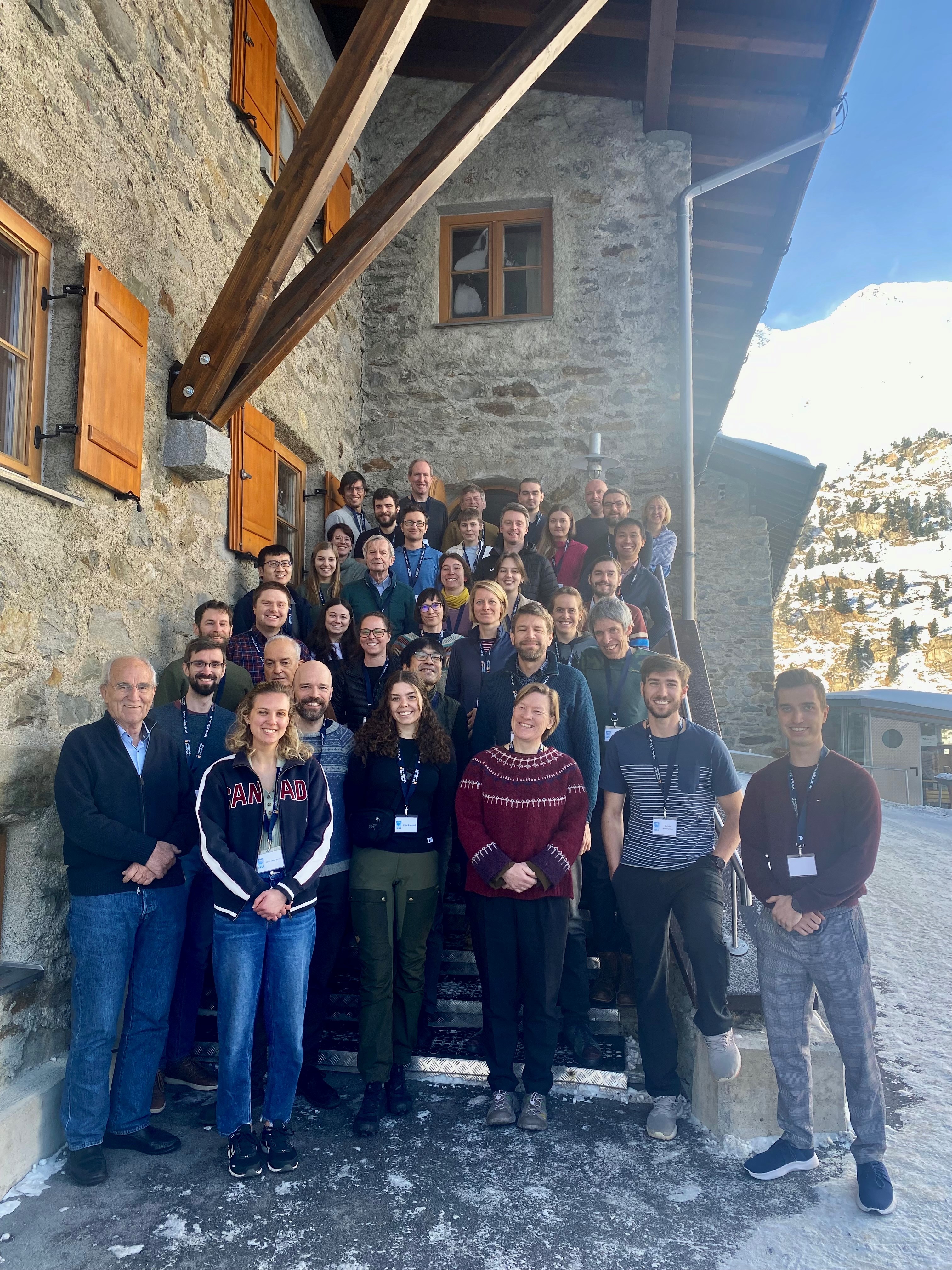Final Project Report
 In late January scientists with an interest in glaciers and climate gathered in a beautiful winter setting in Obergurgl, Austria. The IASC Network on Arctic Glaciology meeting included a cross-cutting activity on “Glacier – atmosphere interactions in a warming and wetting Arctic” together with a general workshop on the dynamics and mass budget of Arctic glaciers. The full meeting comprised 2,5 days of scientific presentations, discussion sessions, an open forum discussion and a poster session, and was attended by 45 participants from 14 countries, of which 23 were early-career scientists. A total of 29 talks were given, also livestreamed via Zoom, and 11 posters were presented. Thanks to funding from IASC we could provide travel support for 12 early career researchers and two keynotes!
In late January scientists with an interest in glaciers and climate gathered in a beautiful winter setting in Obergurgl, Austria. The IASC Network on Arctic Glaciology meeting included a cross-cutting activity on “Glacier – atmosphere interactions in a warming and wetting Arctic” together with a general workshop on the dynamics and mass budget of Arctic glaciers. The full meeting comprised 2,5 days of scientific presentations, discussion sessions, an open forum discussion and a poster session, and was attended by 45 participants from 14 countries, of which 23 were early-career scientists. A total of 29 talks were given, also livestreamed via Zoom, and 11 posters were presented. Thanks to funding from IASC we could provide travel support for 12 early career researchers and two keynotes!
The general workshop included stimulating sessions on glacier mass balance, glaciers dynamics, glacier hydrology and glacier calving and frontal ablation. The cross-cutting activity consisted of two oral presentation sessions, followed by a cross-cutting discussion session. A poster session covered both the cross-cutting and general workshop theme. Two keynote lectures were given on the resilience of Greenland firn to climate warming (Brice Noël) and North-Atlantic cooling and the impact on Icelandic glacier mass balance (Gudfinna Adalgeirsdottir). Other presentations in the cross-cutting theme among others discussed turbulent heat and moisture fluxes over a glacier surface (Maurice van Tiggelen, Maiken Kristiansen Revheim), the Greenland Climate Network (Andreas Ahlstrøm, Jason Box), and the history of climate change work in Greenland (Jakob Abermann). Other studies looked into climate impacts on glaciers in Norway (Liss Andreassen) and the Canadian Arctic (Danielle Hallé). The cross-cutting discussion focused on how we can improve collaboration between modellers and observers and between glaciologists and meteorologists. Discussion points e.g. included 1) how we can improve the representation of glaciers and ice sheets in regional climate models and earth system models, 2) changes in large-scale circulation patterns and the impact on glacier mass balance, 3) rain-on-snow events and the impact on snow, firn and runoff, 4) remote sensing and in-situ observations of precipitation and snowfall on Arctic glaciers.
Scientific highlights:
- North Atlantic cooling is responsible for mitigation of Icelandic glacier mass loss until the mid-21st century. On the Greenland Ice Sheet refreezing of melt water is a significant buffer against mass loss in a warming climate, which however will peak around 2100. [Brice Noël, Gudfinna Adalgeirsdottir]
- The combination of recent remote sensing data and historical meteorological, ablation and snow line observations facilitate the analysis of long-term climate impacts on Greenland’s mass balance [Jakob Abermann, Jason Box]
- Whereas extreme melt summers lead to the formation of thick ice layers in Greenland’s accumulation area, significantly altering runoff, a contrasting reduction in ice layers is found in the Canadian Arctic [Horst Machguth, Nicole Clerx, Danielle Hallé]
Photo: Erika Brummell - IASC NAG Group Photo 2023
Date and Location
26-28 January 2023 I Obergurgl, Austria
IASC Working Groups funding the project
- Atmosphere WG
- Cryosphere WG
Project Lead
Ward van Pelt (Uppsala University, Sweden)
Year funded by IASC
2022
Project Status
Completed
